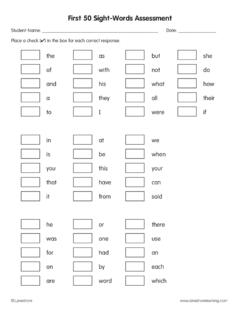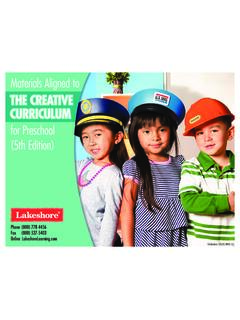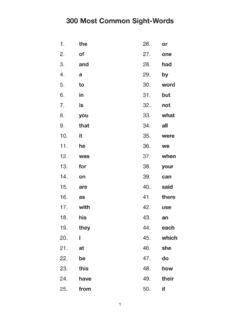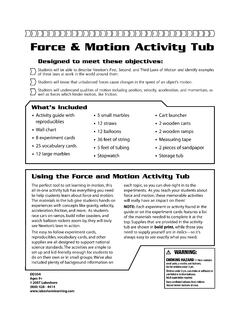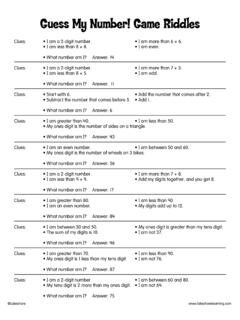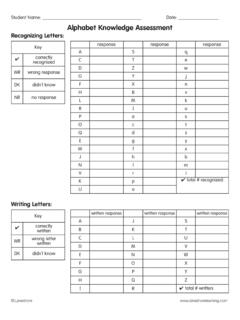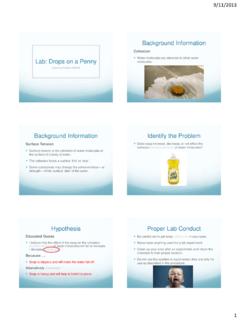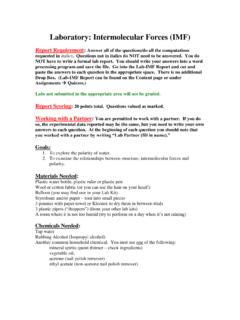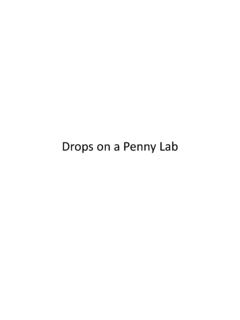Transcription of 3rd–5th Grade - lakeshorelearning.com
1 3rd 5th GradeObjectives Exploring the concept of surface tension Making and testing a hypothesis by estimating the number of water drops that can fit on a penny and testing their predictions Analyzing data by averaging and comparing figuresMaterials Needed Water drop Record Sheet Pennies (one for each student) Eyedroppers Cups of waterIntroductionAsk students if they have ever seen a mosquito or other small bug sitting on the surface of a body of water. Explain that the surface of the water acts as skin. It tends to hold together because the water molecules are attracted to each other. This is called surface tension. Tell students that they are going to conduct an experi-ment that demonstrates how water molecules stick together to create surface 1. Give each student a penny . Ask students to predict how many drops of water will fit on the surface without Encourage volunteers to share their predictions and explain their reasoning.
2 Did they base their predictions on the size of the drops? The size of the penny ? Something else?3. Distribute copies of the Water drop Record Sheet, and instruct students to record their predictions in the cor-rect box on their Practice1. Divide the class into groups of two or three. Provide each group with an eyedropper and a cup of Instruct students to place the penny tails up and hold the eyedropper one inch above the surface. Have students count the drops as they add them one at a time to the surface of the Prompt students to record the number of drops the penny held before any amount of water overflowed. Have them calculate the difference between their predictions and the Have students complete the experiment two more times and record the results in the spaces Ask students to average the results by adding the total number of drops from all three trials and dividing that total by 3.
3 Instruct them to record the average on their For further investigation, have students repeat the experiment with the variables listed on the chart at the bottom of their sheet. Encourage them to record any observations in the space provided. Lakeshore to students that the surface tension causes the drops of water to stick together on the penny instead of rolling off. The molecules of water on the surface of the penny are attracted to each other, so they tend to combine into one large drop rather than overflowing. Finally, discuss how the results changed when students changed each variable. Invite students to share their thoughts and observations. Lakeshore Name: _____How many drops of water will fit on the surface of a penny without overflowing?Find the average of your results using this formula. ( _____ + _____ + _____ ) 3 = _____ Trial 1 Trial 2 Trial 3 AverageRepeat the experiment with the following variables.
4 How did your results change?Observations: _____Trial(with eyedropper one inch above tails side of penny ) 123 PredictionActual ResultDifference(between the prediction and actual result)TrialWith the penny heads upWith the eyedropper three inches above the pennyWith ice waterResult Lakeshore
